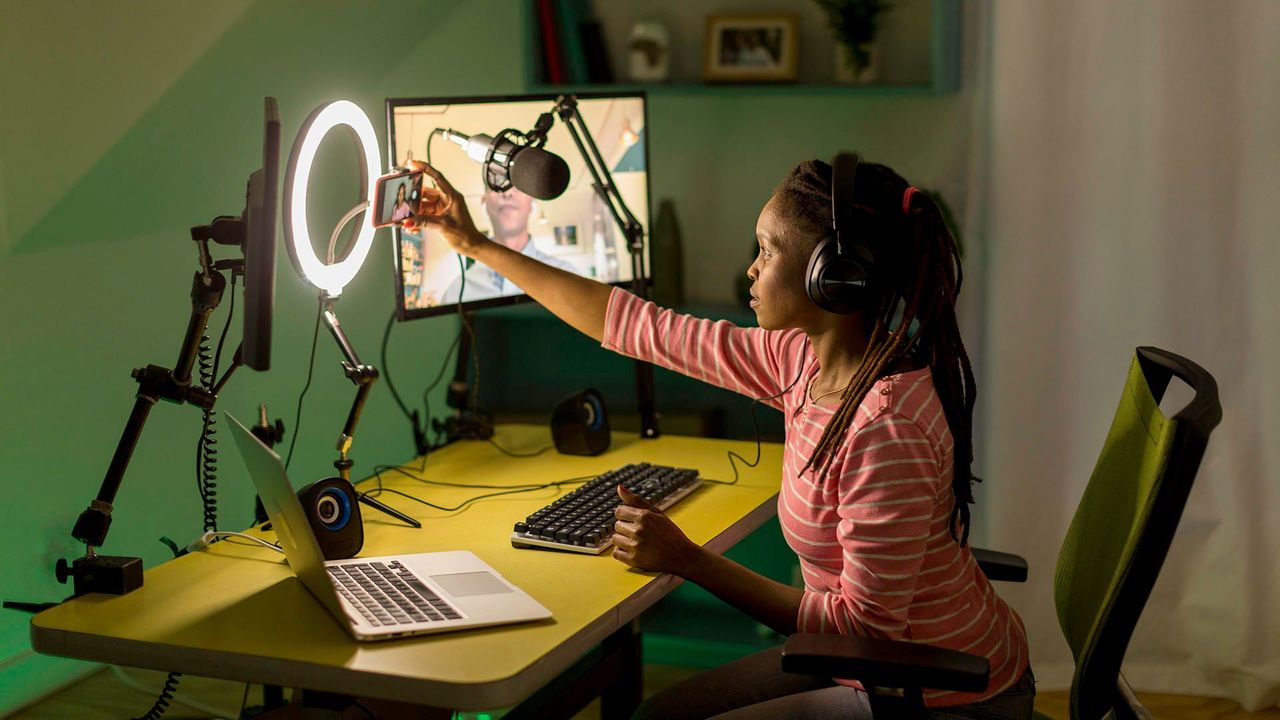Discover how social media fuels travel dysmorphia and what content creators can do to reclaim authenticity and mental well-being in their travel content.
Social media has created “travel dysmorphia,” a growing sense of inadequacy about one’s travel experiences compared to curated content. This article explores how influencers and travelers experience this pressure, the psychological mechanisms behind it, and strategies to foster authenticity and mental well-being while creating and consuming travel content.
Table of Contents
- What Is Travel Dysmorphia? — Definition, Origins, and Misconceptions
- How Social Media Intensifies Travel Dysmorphia
- Psychological Mechanisms Behind Travel Dysmorphia
- Real-Life Stories from Creators & Travelers
- Risks & Consequences for Content Creators
- Strategies for Creators to Resist Travel Dysmorphia
- How Social Media Contributes to Body Dysmorphia
- What Is the Root Cause of Dysmorphia?
- FAQs
- Final Thoughts
1. What Is Travel Dysmorphia? — Definition, Origins, and Misconceptions
Travel dysmorphia is a growing psychological phenomenon describing a feeling of inadequacy about one’s travel experiences compared to the polished, idealized trips showcased on social media. While it is not a clinically recognized disorder, the term captures the emotional and social pressures that emerge in a world dominated by highlight reels.
A 2025 study conducted by Talker Research for Scenic Group found that nearly 70% of Americans report feeling “behind” in their travel experiences compared to peers and influencers (TalkerResearch.com). Gen Z is particularly affected, with 47% citing influencer content and YouTube videos as contributing to this pressure.
Common Misconceptions:
- It’s not just wanderlust: Travel dysmorphia is rooted in comparison, not the desire to explore.
- It’s not ego-driven: Feeling inadequate is a cultural and social pressure, not vanity.
- It’s reversible: Mindset, content habits, and reflective practices can reduce its impact.

2. How Social Media Intensifies Travel Dysmorphia
Social media is both the mirror and the amplifier of travel dysmorphia. Here’s how:
1 Highlight Reels & Storytelling Bias
- Only the best moments get posted—sunrises, luxury hotels, perfect food shots.
- Mundane experiences or mishaps are usually omitted, creating an unrealistic benchmark.
2 Algorithmic Reinforcement
- Social platforms push content that generates engagement—vibrant, exotic, aspirational.
- Users who engage with luxury or high-end travel content are served more of it, reinforcing skewed expectations.
3 Social Comparison Theory
- Humans naturally compare themselves to peers and aspirational figures.
- Constant exposure to “above average” travel experiences lowers self-satisfaction.
4 Influencer Pressure & Aspirational Content
- Influencers monetize exotic experiences, normalizing high travel benchmarks.
- Many followers feel “behind” in life because they haven’t done similarly extravagant trips (InsideHook.com).
5 Fear of Missing Out (FOMO)
- Captions like “7 days in Bali” imply that less ambitious trips are inadequate.
- Creates guilt or pressure to travel bigger and more frequently.
6 Filtered Images & Location Perfection
- Drone shots, HDR photography, and color grading make destinations appear more magical.
- Reality rarely matches the visual perfection seen on feeds.
3. Psychological Mechanisms Behind Travel Dysmorphia
Travel dysmorphia is fueled by deep-seated psychological mechanisms:
1 Cognitive Distortions & Negativity Bias
- Humans focus more on gaps than achievements.
- Travelers dwell on what “could have been better” rather than celebrating accomplishments.
2 Self-Oriented Perfectionism
- High personal standards amplify dissatisfaction.
- Creators constantly evaluate their content against aspirational ideals.
3 Social Identity & Belonging
- Identity is often tied to travel experiences.
- Feeling “behind” creates dissonance between self-perception and perceived social expectations.
4 Reinforcement Loops
- Pressure to outperform previous trips can lead to content-driven travel choices, rather than experience-driven ones.
- When content underperforms, self-doubt intensifies.
5 Emotional Contagion & Social Priming
- Exposure to peers’ posts primes desire for more ambitious travel, even subconsciously.
- Social media shifts mental baselines upward, making moderate experiences feel insufficient.
4. Real-Life Stories from Creators & Travelers
Story A: The Always-Chasing Creator
Maya, a travel blogger, felt compelled to book expensive trips for Instagram. Simple local trips felt “boring,” and she experienced anxiety over engagement metrics.
Story B: Small-Town Traveler with Instagram Guilt
Josh travels locally but feels ashamed when friends ask about vacations. He sometimes avoids posting his real trips.
Story C: Burnout After “Need to Top” Thinking
Lea constantly sought sensational content. By the end of a lavish trip, she realized she hadn’t enjoyed it and felt emotionally drained.
These examples reflect a growing trend among creators worldwide.
5. Risks & Consequences for Content Creators
1 Mental Health Toll
- Burnout from chasing constant “perfect” content.
- Imposter syndrome when comparing themselves to top influencers.
- Decreased self-esteem linked to perceived travel inadequacy.
2 Creative Stagnation
- Focus on Instagrammable content limits experimentation.
- Creative growth stalls if content is designed solely to match trends.
3 Financial & Lifestyle Strain
- Overspending to keep up with influencer standards.
- Travel as a performance metric can overshadow personal fulfillment.
4 Loss of Authenticity
- Hiding struggles with travel reduces audience connection.
- Over-curation alienates followers who crave genuine experiences.
6. Strategies for Creators to Resist Travel Dysmorphia
1 Reframe Metrics
- Prioritize quality of experience over quantity or luxury.
2 Intentional Content Planning
- Mix aspirational posts with grounded, authentic experiences.
3 Mindful Consumption
- Unfollow accounts that trigger comparison.
- Follow creators who share honest, less-polished travel stories.
4 Journaling
- Record thoughts about trips separate from engagement metrics.
5 Anchor with Personal Values
- Focus on growth, connection, or storytelling rather than status.
6 Collaborate and Co-Create
- Include local voices and perspectives for richer narratives.
7 Scheduled Sabbaticals
- Take breaks from posting or social media.
8 Peer Support or Mentorship
- Discuss struggles openly with trusted peers or professionals.
9 Adaptive Content Formats
- Use blogs, podcasts, or essays to provide deeper reflections.
10 Embrace Constraints
- Limited budgets or locations can spark creativity and originality.
7. How Social Media Contributes to Body Dysmorphia
Social media fuels body dysmorphia similarly to travel dysmorphia:
- Highlighting “perfect” bodies and filtered images.
- Encouraging comparison with curated, unrealistic standards.
- Research shows that exposure to edited content lowers self-esteem and increases body dissatisfaction.
8. What Is the Root Cause of Dysmorphia?
Dysmorphia stems from distorted self-perception caused by:
- Exposure to idealized media
- Perfectionism
- Low self-esteem
- Algorithmic reinforcement
- Cultural pressure to equate visual success with self-worth
Both travel and body dysmorphia are about perception, not reality, and require recalibration through mindfulness, reflection, and authentic engagement.
10. Trending FAQs
1. What is travel dysmorphia?
Travel dysmorphia refers to the feeling of inadequacy or dissatisfaction with your own travel experiences when comparing them to curated, idealized versions of travel seen on social media. Unlike wanderlust, which is the desire to explore, travel dysmorphia is a psychological phenomenon driven by comparison. Travelers may feel their trips are “not enough” or “less exciting,” even when objectively meaningful or enjoyable. This term, while not clinically recognized, highlights the emotional toll of social media-fueled travel expectations.
2. How does social media contribute to travel dysmorphia?
Social media fuels travel dysmorphia in multiple ways:
- Highlight reels: Only the best moments, like sunsets or luxury accommodations, are shared.
- Algorithmic reinforcement: Platforms push aspirational content that triggers engagement.
- Social comparison: Seeing peers’ exotic trips creates a sense of inadequacy.
- Influencer culture: Frequent posts about extravagant experiences normalize high travel benchmarks.
- FOMO: Users feel pressure to “keep up” with curated travel lifestyles.
Research shows constant exposure to idealized travel content can lower self-esteem and increase stress related to travel planning.
3. Can travel dysmorphia affect mental health?
Yes. Travel dysmorphia can lead to:
- Anxiety and stress about planning trips that “measure up.”
- Burnout among creators trying to maintain a polished travel persona.
- Feelings of inadequacy, low self-esteem, and imposter syndrome.
- Reduced satisfaction in real-world experiences because of constant comparison to online highlights.
Mental health professionals recommend mindfulness, media literacy, and reducing social comparison to mitigate these effects.
4. Are content creators more vulnerable to travel dysmorphia?
Content creators are especially vulnerable because their livelihood often depends on engagement metrics. High-performing posts are rewarded by algorithms, while underperforming content can trigger self-doubt. Constantly producing aspirational content may blur the line between personal enjoyment and audience expectation, making creators more prone to stress, burnout, and distorted self-perception.
5. How do I know if I have travel dysmorphia?
You may be experiencing travel dysmorphia if you notice:
- Feeling inadequate about your trips compared to what you see online.
- Avoiding posting your real travel experiences due to perceived “boringness.”
- Planning trips based more on aesthetics than personal enjoyment.
- Experiencing anxiety, stress, or guilt around travel.
Self-awareness is the first step; journaling experiences and reflecting on motivations for travel can help identify these patterns.
6. What strategies help resist travel dysmorphia?
Effective strategies include:
- Mindful social media use: Limit exposure to overly curated travel feeds.
- Content balance: Mix aspirational posts with authentic, real-life experiences.
- Reframe success: Focus on personal growth and enjoyment rather than likes.
- Journaling: Record reflections separate from social media metrics.
- Collaborate: Include local voices or lesser-known destinations to diversify content.
- Digital detoxes: Take breaks from social media to reset expectations.
- Value-driven travel: Align trips with your personal interests, not trends.
7. Can limiting social media reduce dysmorphia?
Yes. Reducing social media exposure decreases the frequency of comparison and reduces pressure to match idealized experiences. Users who take deliberate breaks often report higher satisfaction with their travel and less stress about meeting external expectations. Curating your feed to include authentic travel experiences can also help.
8. How do creators balance aspirational content with authenticity?
Creators can maintain balance by:
- Sharing behind-the-scenes content alongside highlight moments.
- Telling stories about challenges, mishaps, or learning experiences during trips.
- Using captions that focus on reflection, growth, and personal perspective.
- Prioritizing storytelling and education over visual perfection.
- Engaging with audiences about meaningful experiences rather than just visuals.
This approach builds trust, relatability, and long-term engagement while reducing dysmorphia.
9. Examples of creators who approach travel authentically
- The Bucket List Family – Focus on family experiences, cultural immersion, and meaningful connections rather than luxury aesthetics.
- Nomadic Matt – Prioritizes budget travel, local interactions, and practical tips over “Instagrammable” shots.
- Expert Vagabond – Shares adventure travel stories with both challenges and successes, emphasizing the journey, not perfection.
These creators inspire without fostering unhealthy comparison.
10. How often should creators revisit travel goals?
Creators should review goals every 3–6 months, aligning them with personal well-being, creativity, and audience feedback rather than external pressures. Reassessing goals helps prevent burnout, maintain authenticity, and ensure content remains reflective of genuine experiences.
11. How does social media contribute to body dysmorphia?
Social media contributes similarly to body dysmorphia by promoting unrealistic beauty standards through filters, editing, and curated influencer content. Continuous exposure can distort self-perception, lower self-esteem, and trigger compulsive comparison. According to the American Psychological Association (APA), seeing idealized content increases the risk of body dissatisfaction, particularly in teens and young adults.
12. What is the root cause of dysmorphia?
The root cause of dysmorphia—whether travel, body, or lifestyle-related—is distorted self-perception fueled by comparison and perfectionism. Contributing factors include:
- Exposure to idealized media and social feeds
- Perfectionist tendencies and internalized high standards
- Low self-esteem or fragile self-concept
- Algorithmic reinforcement of aspirational content
- Cultural pressures to equate visual success with personal worth
Dysmorphia reflects perception, not reality, and can be mitigated through reflection, authenticity, and mindfulness.
12. Final Thoughts & Call to Action
Travel dysmorphia is a modern reflection of social media culture, showing how perception can outweigh reality. For creators, reclaiming authenticity and mental balance is possible through reflective practices, content strategy adjustments, and mindful consumption.
Call to Action:
- Reflect on your own travel content intentions.
- Balance aspirational content with authentic storytelling.
- Prioritize mental health and creative joy over metrics.




